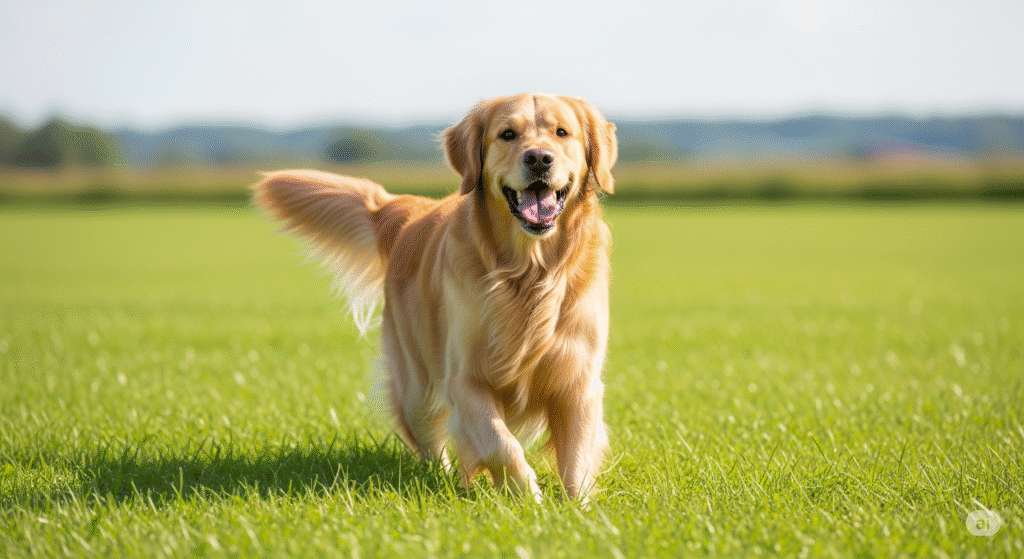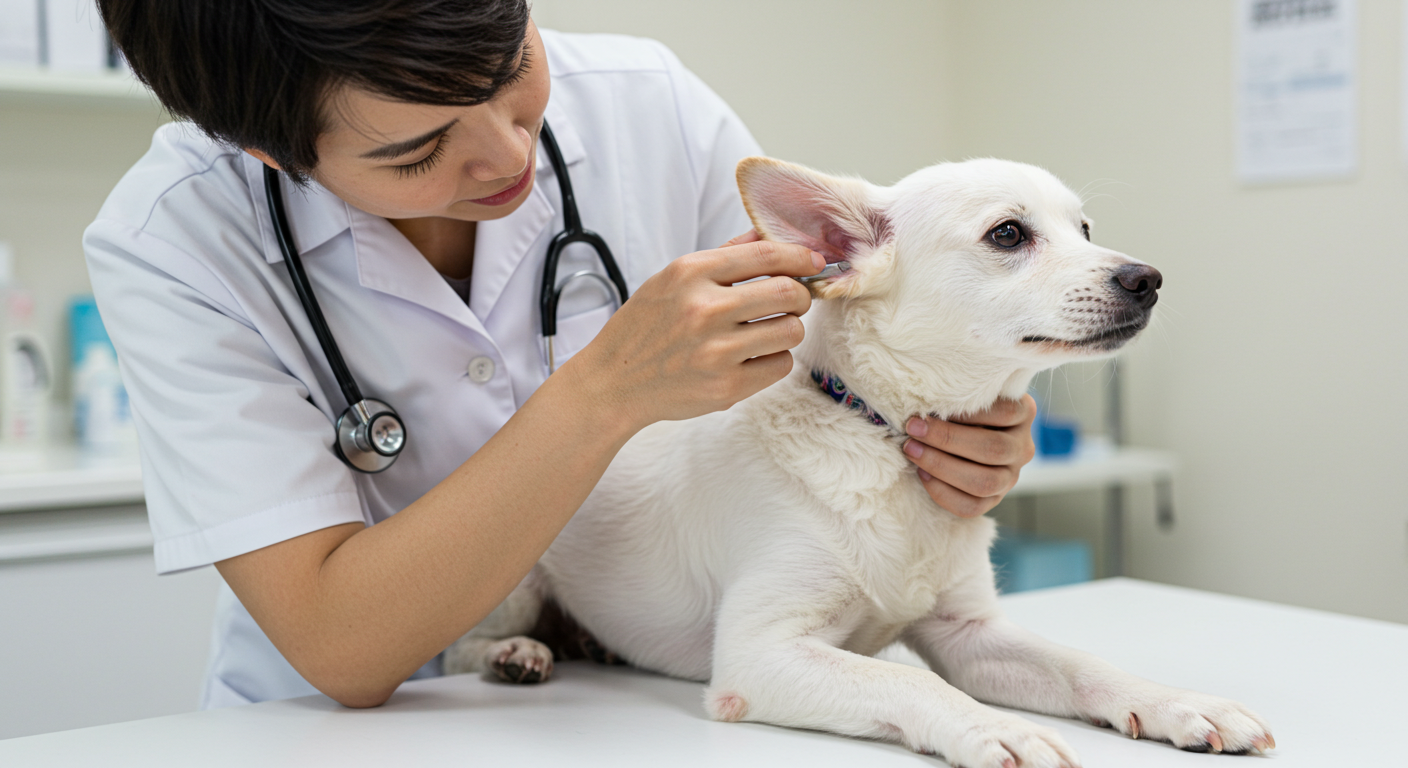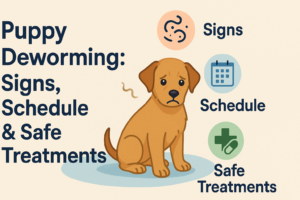Medical Disclaimer: This article provides general information and is not a substitute for professional veterinary advice. If your dog is showing signs of allergies or illness, please consult with a qualified veterinarian for an accurate diagnosis and personalized treatment plan.
Table of Contents
Introduction: Recognizing Seasonal Allergies in Dogs
As a veterinarian in Ottawa, I’ve seen countless dogs whose families wonder why their beloved companion is suddenly scratching incessantly, or gnawing at their paws. More often than not, the culprit is seasonal allergies in dogs. These environmental sensitivities can transform a pet’s joyful antics into a frustrating cycle of discomfort, especially when the seasons change.
Unlike us humans, who might reach for tissues and eye drops, dogs primarily experience allergic reactions through their skin and ears. What begins as a simple itch can quickly escalate into widespread redness, painful inflammation, and secondary infections, significantly impacting their quality of life. Tiny particles of pollen, mold spores, or microscopic dust mites can all trigger this immune response, leading to the tell-tale signs of seasonal allergies in dogs.
Understanding these subtle yet significant indicators is the first step in alleviating your dog’s discomfort. In this guide, we’ll break down the 10 most common signs of seasonal allergies in dogs, explore their causes, and discuss when it’s time to seek professional veterinary care. My goal is to equip you with the knowledge to ensure your dog gets the relief they need.
II. Understanding What Causes Seasonal Allergies in Dogs
Dogs don’t get “hay fever” quite like humans. Instead of sneezing and congestion, seasonal allergies in dogs primarily manifest through skin irritation, itching, and ear issues. Why this difference? Their immune systems react differently to airborne particles.
Common Environmental Triggers
The main culprits behind seasonal allergies in dogs are microscopic airborne particles prevalent during specific seasons. These include:
- Pollen: A major offender from trees, grasses, and weeds, especially in spring, summer, and fall. Pollen settles on your dog’s coat and skin.
- Mold Spores: Found in damp environments, decaying leaves, and even indoors, mold thrives in humid conditions.
- Dust Mites: Microscopic allergens in household dust, bedding, carpets, and upholstery, present year-round but with fluctuating populations.

How Dogs React to Allergens
Dogs tend to absorb allergens directly through their skin, particularly on their paws, belly, and face, rather than inhaling them. This triggers their immune system to release chemicals like histamines, leading to relentless itching, redness, and inflammation—the hallmark signs of seasonal allergies in dogs.
Some breeds, like Labrador Retrievers, Golden Retrievers, Bulldogs, and various Terriers, are genetically predisposed to environmental allergies. My clinical experience confirms these breeds frequently present with such issues. If left unmanaged, seasonal allergies in dogs can lead to secondary bacterial or yeast infections, hair loss, and chronic discomfort, underscoring the importance of early recognition.
III. The Top 10 Common Signs of Seasonal Allergies in Dogs
If your dog is battling seasonal allergies in dogs, common indicators include itching, skin irritation, and behavioural changes. Here are the 10 most common signs:
- Excessive Scratching and Itching: Relentless scratching of paws, face, ears, or belly. Allergens cause histamine release, leading to intense itchiness and potentially raw skin.
- Licking and Chewing: Compulsive licking/chewing of paws, legs, or belly for relief. Watch for saliva stains or obsessive behaviour that disrupts sleep.
- Skin Redness and Inflammation: Areas of skin become red, swollen, or inflamed. Look for rashes or hives on the belly, groin, or paws, and warm-to-the-touch skin.
- Recurring Ear Infections: Inflammation in the ear canal leads to itchiness and secondary bacterial/yeast infections. Signs include head shaking, ear pawing, bad odor, or discharge.
- Eye Irritation (Red, Watery, or Discharge): Red, watery, or itchy eyes due to pollen or dust. Seek vet attention if discharge is thick or discolored, indicating infection.
- Sneezing and Nasal Discharge: Less common, but some dogs show mild respiratory symptoms like occasional sneezing or clear nasal discharge. Discolored discharge suggests infection.
- Hair Loss (Bald Spots or Thinning Fur): Persistent scratching and licking lead to fur thinning or bald patches, especially on paws, belly, or legs, increasing infection risk.
- Skin Changes (Thickening, Darkening, or Crust Formation): Chronic inflammation can cause skin to thicken, darken (lichenification), or develop crusts over time.
- Paw Licking and Chewing (Red, Inflamed Paws): Obsessive paw attention, especially between toes, causing redness, swelling, and often a “corn chip” smell (yeast infection).
- Face Rubbing (Against Furniture or Carpet): Dogs rub their face against surfaces to relieve facial itchiness. Be concerned if skin around eyes, muzzle, or ears becomes raw.
IV. When to See a Veterinarian for Dog Allergies
While mild seasonal allergies in dogs can sometimes be managed at home, persistent or worsening symptoms demand professional veterinary attention. Untreated allergies can lead to serious secondary infections and chronic discomfort.
When Should You Be Concerned?
- Excessive or Persistent Symptoms: If your dog constantly scratches, licks, or rubs to the point of hair loss, sores, or broken skin.
- Recurring Ear Infections: Frequent head shaking, ear scratching, or a foul odor from the ears.
- Skin Infections or Sores: Red, swollen, oozing, or crusted skin, indicating bacterial or yeast infections.
- Paw Infections: Swollen, red paws, or a strong smell from excessive licking.
- Respiratory Issues (Rare): Difficulty breathing, wheezing, or severe nasal discharge (requires immediate vet assessment).
How Seasonal Allergies in Dogs Are Diagnosed
To differentiate seasonal allergies in dogs from other conditions, your vet will perform a thorough examination and may use:
- Physical Exam: Checking skin, ears, paws for inflammation or infection.
- Skin Tests or Allergy Testing: Intradermal tests or blood tests to identify specific allergens.
- Dietary Trial: A hypoallergenic diet may be recommended to rule out food allergies.
- Skin Scrapings or Cytology: Examining skin samples under a microscope to identify bacteria, yeast, or mites.
A precise diagnosis is crucial for effective treatment.

V. Treatment and Management Options for Dog Seasonal Allergies
Once seasonal allergies in dogs are confirmed, your vet will create a customized plan, often combining medications, topical therapies, and lifestyle adjustments.
1. Medications for Allergy Relief
- Antihistamines: May help mild cases (e.g., Benadryl, Zyrtec), but effectiveness varies.
- Cytopoint Injections: Targeted injectable therapy that blocks itch signals for weeks.
- Apoquel: Fast-acting oral medication controlling itching and inflammation.
- Steroids (Corticosteroids): Used short-term for severe cases to rapidly reduce inflammation.
2. Topical Treatments for Skin & Paw Relief
- Medicated Shampoos & Wipes: Remove allergens, soothe irritation, and treat secondary infections.
- Paw Soaks or Wipes: Reduce allergen buildup on paws after walks.
- Hydrocortisone Creams or Sprays: Provide targeted itch relief for inflamed areas.
3. Environmental Adjustments
- Air Purifier: Reduces indoor allergens like dust and pollen.
- Frequent Cleaning: Vacuuming, washing bedding to minimize allergen buildup.
- Limit Outdoor Exposure: Walk during low pollen times; keep windows closed on high pollen days.
4. Dietary Support & Supplements
- Hypoallergenic Diets: May benefit sensitive dogs or those with concurrent food sensitivities.
- Omega-3 Fatty Acids: Support skin health and reduce inflammation.
- Probiotics: Strengthen gut health, potentially regulating immune responses.
Managing seasonal allergies in dogs requires consistent effort. By combining veterinary-prescribed treatments with practical adjustments, you can significantly improve your dog’s comfort and quality of life.

VI. Conclusion: Helping Your Dog Thrive Allergy-Free
Seasonal allergies in dogs are a common but manageable challenge. Recognizing early signs—like excessive scratching, paw licking, ear infections, or skin irritation—is the critical first step in preventing long-term discomfort and complications. My experience as a DVM has consistently shown that early intervention makes a world of difference.
Ignoring these issues can lead to chronic skin infections, hair loss, and ongoing misery for your pet. If you suspect your dog has seasonal allergies in dogs, don’t delay. A timely visit to your veterinarian provides a clear diagnosis and a tailored treatment plan. With the right combination of medications, environmental adjustments, and proper skincare, your cherished companion can truly enjoy every season—without the constant, maddening itch!
VII. Frequently Asked Questions (FAQ) About Seasonal Allergies in Dogs
1. How do I know if my dog has seasonal allergies or food allergies? 👉 Seasonal allergies are seasonal (pollen, mold); food allergies are year-round and may include digestive upset. Consult your vet for accurate diagnosis.
2. Can I give my dog Benadryl for seasonal allergies? 👉 Benadryl may help mild itching (1 mg per pound, every 8–12 hours). Always consult your vet first, especially if your dog has other health conditions.
3. Do seasonal allergies in dogs go away on their own? 👉 No, seasonal allergies in dogs are chronic. They can improve or worsen depending on allergen exposure, requiring long-term management.
4. Can I prevent seasonal allergies in my dog? 👉 You can minimize exposure: wipe paws/coat after walks, use medicated shampoos, and keep your home clean with air purifiers.
5. What are the best natural remedies for seasonal allergies in dogs? 👉 Oatmeal baths, Omega-3 fatty acids, and probiotics may offer complementary relief. Discuss all natural remedies with your vet.
6. Are certain dog breeds more prone to seasonal allergies? 👉 Yes, breeds like Labradors, Golden Retrievers, Bulldogs, and Terriers are often more susceptible.
7. How long do seasonal allergies last in dogs? 👉 They flare up during specific seasons when triggers are active; duration depends on climate and sensitivity.
8. Can dogs develop seasonal allergies later in life? 👉 Yes, dogs can develop them at any age, often starting between 1-3 years old and potentially worsening over time.
9. What happens if I don’t treat my dog’s seasonal allergies? 👉 Untreated allergies lead to chronic skin infections, severe hair loss, thickened skin, and constant discomfort.
10. When should I take my dog to the vet for allergies? 👉 If your dog has persistent itching, open sores, infections, severe redness, ear infections, or paw swelling, see a vet.




